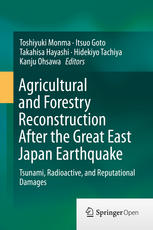

Most ebook files are in PDF format, so you can easily read them using various software such as Foxit Reader or directly on the Google Chrome browser.
Some ebook files are released by publishers in other formats such as .awz, .mobi, .epub, .fb2, etc. You may need to install specific software to read these formats on mobile/PC, such as Calibre.
Please read the tutorial at this link: https://ebookbell.com/faq
We offer FREE conversion to the popular formats you request; however, this may take some time. Therefore, right after payment, please email us, and we will try to provide the service as quickly as possible.
For some exceptional file formats or broken links (if any), please refrain from opening any disputes. Instead, email us first, and we will try to assist within a maximum of 6 hours.
EbookBell Team

4.7
106 reviewsThis book summarizes the results of 3 years of agricultural and forestry reconstructive efforts and applied research conducted directly in the affected areas of Fukushima following the Great East Japan Earthquake. It describes fast and effective revival methods and technologies from tsunami and radiation damages, demonstrated through the collaborative efforts of researchers, students, local farmers, forest owners, and municipalities gathered under the Tokyo University of Agriculture East Japan Assistance Project. Consisting of four parts, the first part of the book provides an overview of the damage and measures taken to overcome them by the local municipalities and the Tokyo University of Agriculture. The second part presents data and results of agricultural recovery from the tsunami—for example, monitoring systems, reconstruction models, and convenient, low-cost methods developed for the restoration of tsunami-damaged paddy fields. The third part focuses on recovery from radiation-contaminated farmlands and forests and consequent reputational damages. Included are various primary data obtained from field experiments and surveys, studies on the mechanism of contamination, and the results of radical monitoring, decontamination, and restoration techniques performed at this site. The final part is a collection of reflections of local farmers, forest owners, and students who participated in the project. The academic trials and errors recorded in this book are an invaluable contribution to disaster management and recovery processes. It is written for a wide audience, not limited to researchers and students, but also for government and state officials, municipalities, agricultural cooperative staff members, and farmers.